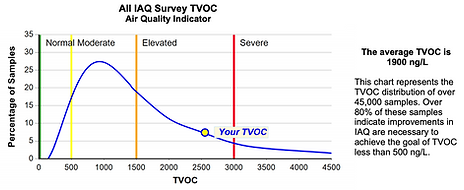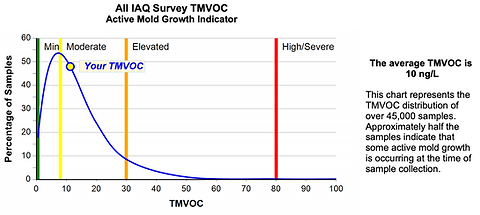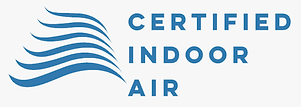We Offer VOC Formaldehyde Testing
What Are VOCs?
Volatile Organic Compounds (VOCs) are emitted as gases from various products. These dangerous chemicals are present in paints, varnishes, and wax, all containing organic solvents, including many cleaning, disinfecting, cosmetic, degreasing, and hobby products.
While being used or even when they are stored, all these goods have the potential to release organic compounds. Concentrations of VOCs can be higher indoors (up to ten times higher) than outdoors.
Mold and VOCs
Many toxic molds produce VOCs as well. If you've ever heard the term "off-gassing," this refers to new items like furniture, mattresses, and building materials releasing VOCs into the air.
Why Choose VOC Testing?
VOCs can cause allergic reactions, as well as eye, nose, and throat irritation, and are often carcinogenic (cancer-causing).
The VOC Testing Procedure and Reporting
Indoor air quality can be challenging to assess because of the variety of building types, conditions, and possible VOC sources.
Our accurate and cost-effective clean-air audit, the IAQ Survey, uses a single sample to report the air quality via the total levels of airborne chemicals (VOCs / TVOC) and active growing mold (MVOCs /TMVOC). Most importantly, the chemical information is translated into potential source categories. This makes it possible to create an action plan to enhance air quality.
If a real estate transaction is involved, it specifies the chemical contamination caused by the home itself.
View a Sample Report

Formaldehyde Testing
Formaldehyde is present in small amounts in almost all homes. Formaldehyde is a colorless, strong-smelling gas commonly used to produce many household and industrial products, including resins, plastics, textiles, paper products, and adhesives.
This gas is also used in making building materials, pressed-wood products, such as particleboard, plywood, and fiberboard; glues and adhesives; permanent-press fabrics; paper product coatings; and certain insulation.
Elevated levels are sometimes found in areas with poor ventilation or from new construction.
Why Choose Formaldehyde Testing?
Formaldehyde is classified as a Group 1 carcinogen known to cause cancer in humans by the International Agency for Research on Cancer (IARC). It has also been linked to diseases such as leukemia.
When formaldehyde is present in the air at levels exceeding 100 ppb, some individuals may experience adverse effects such as burning sensations in the eyes, nose, and throat, as well as coughing, wheezing, nausea, and skin irritation. Some people are susceptible to formaldehyde, while others do not react to the same exposure level.
It can be toxic and irritating to humans and animals if they are exposed to it in high concentrations or over long periods.
Formaldehyde Testing Procedure and Reporting
An IAQ (Indoor Air Quality) survey for formaldehyde testing is a comprehensive assessment of indoor air quality with a specific focus on measuring the level of formaldehyde in the air.
- The first step in formaldehyde testing is to collect a representative sample of the tested material or environment.
- Once collected, the sample is preserved to prevent the formaldehyde from degrading or evaporating.
- Certified Indoor Air provides a report summarizing the IAQ survey findings. We include recommendations for reducing formaldehyde levels in the indoor environment and follow-up actions.
View a Sample Report

Request a quote, get information, or ask for professional advice – call our team at (919) 214-5000.
Our Service Areas
Apex, Cary, Chapel Hill, Clayton, Durham, Fuquay-Varina, Garner, Holly Springs, Knightdale, Morrisville, Pittsboro, Raleigh, Rolesville, Wake Forest, Wendell, Willow Spring
Phone: (919) 214-5000 | Email: wtdolch@gmail.com | 514 Daniels Street #172 Raleigh, NC 27605
Available 24/7














